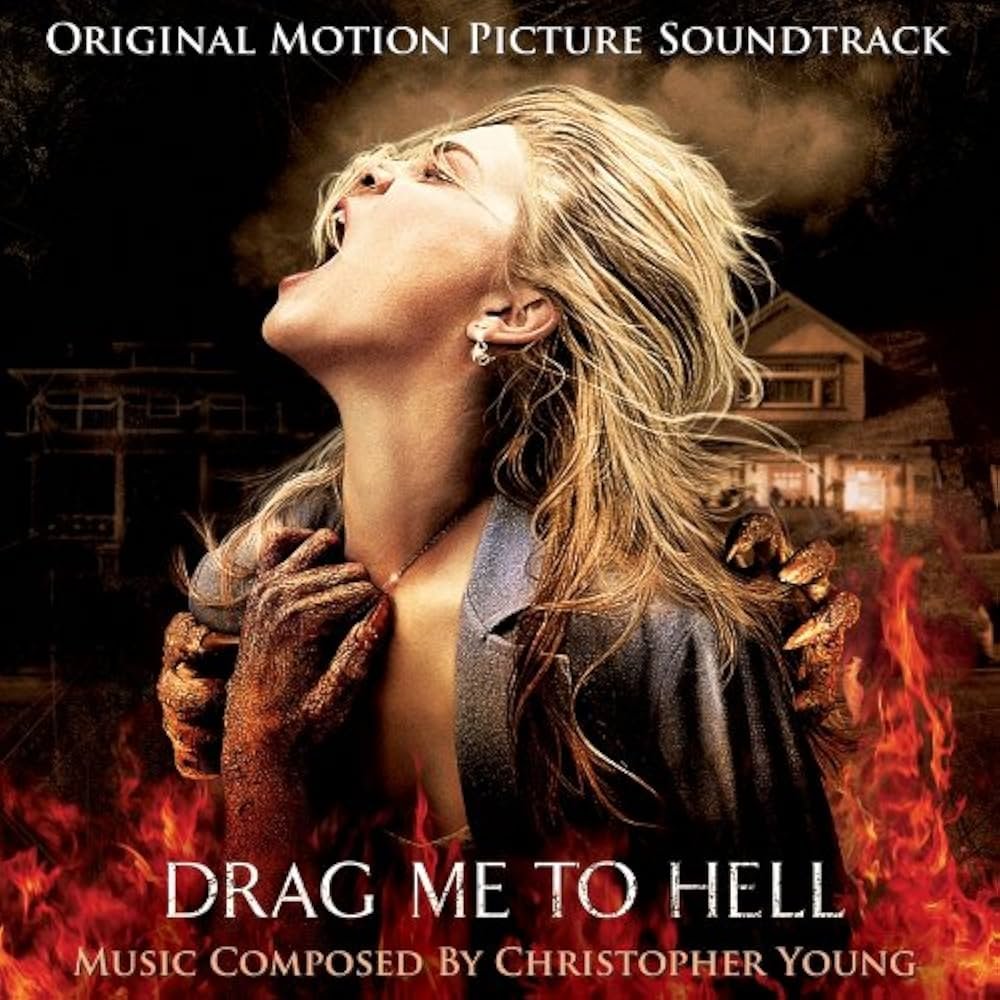
2009 – PG-13 – 1h 39m ⤓

2009 – PG-13 – 1h 39m ⤓
A loan officer who evicts an old woman from her home finds herself the recipient of a supernatural curse. Desperate, she turns to a seer to try and save her soul, while evil forces work to push her to a breaking point.
- Videos 6 ⤓






At what point does gleeful cynicism become so gleeful that it ceases to function as cynicism at all, and mutates into a blatant formalist trope of little emotional or intellectual resonance, but plenty of aesthetic…what’s the word? Bliss? Is frisson somehow appropriate here? I guess it would all depend, largely, on how you feel about horror movies in the first place. But let’s say you do. Like them, that is. In which case, a tricked-out number such as Sam Raimi’s Drag Me To Hell, co-written by Raimi and his brother Ivan, will delight not just on the frenetic-fright level that Raimi set a certain bar for in his Evil Dead films of the ’80s, but also for the ruthlessness with which it toys with viewer sympathies. To get into this a bit will require the use, alas, of some substantive spoilers. Which I will place, although perhaps not immediately, below the jump. Beware. Be warned.

Raimi’s Evil Dead films, beginning in 1981 with the just regular Evil Dead, an ultra-low budget DIY landmark, conflated hysterical laughter with hysterical screaming by making explicit the always-present link between horror violence and slapstick. Raimi’s most obvious antecedents/inspirations were, of course, the Three Stooges, whose eye-gouging, strangulating, head-smiting antics would have caused grave if not fatal injuries if performed in earnest and in real life. Raimi upped the ante with gore, even more pronounced creepy/funny sound effects than you found in an average Stooges short, and a hyper moving camera style. Not to mention cutting that screamed “Boo!” over and over again at breakneck speed. The pictures established him as a gonzo horror maestro, but on entering Hollywood proper he applied his style to a number of different genres—the superhero movie (Darkman), the “straight” thriller (A Simple Plan) and even a baseball picture (For Love of the Game). His work on the blockbuster Spider Man films mostly subsumed his innovative side, alas, and that’s one reason Drag Me To Hell‘s got fans of his earlier work excited. As well they should be. Ultra-extreme vomiting and swallowing are among the shock effects Raimi’s added to the Dead bag of tricks, and they shift the horror action slightly away from Stooges territory and into the realm of great animation gagmen Tex Avery, Frank Tashlin, and Chuck Jones. Indeed, there’s a bit involving an anvil hanging from the ceiling of a toolshed that could have come straight out of a Road Runner cartoon—and the bug-eyed reaction when the anvil drops is the live-action equivalent of one of the escaped-con-wolf’s double takes upon finding he’s still got Droopy on his tail in Northwest Hounded Police.

But while the Evil Dead pictures kind of prided themselves on their thoroughly one-dimensional characterizations—there was the stolid and rather somewhat stupid square-jawed hero Ash, surrounded by malevolent demons and not much else, at least until 1992’s Army of Darkness, in which he teamed up with a bunch of medieval clods—here Raimi goes for…well, I wouldn’t call it depth, exactly. But he and his sibling go to considerable clichéd length to elicit fellow-feeling for ill-fated lead character Christine Brown. Right at the beginning of the film, they show the lean, perky Brown (played by a very game Alison Lohman) passing by a window display of yummy pastries on her way to work. She looks at it longingly, then walks by. Angling for a promotion at her soulless bank job, she denies a loan extension for a decidedly sinister-looking gypsy woman who delivers her hell-condemning curse in a ridiculously slam-bang underground parking lot confrontation. Christine resists—she’s got spunk, in very much the sense that Lou Grant meant it when he ascribed the same quality to Mary Richards—and she spends the rest of the film resisting. Interwoven with the various scares is the information that Christine’s a farm girl making her way to the big city on her own; that she’s a former fatty; that the mother of her psych professor boyfriend (Justin Long) is a social snob who doesn’t approve of Christine, and so on.

The girl cannot catch a break, which makes you root for her even in the most objectionable of circumstances, one of which involves the cutest darn little kitten you’ve ever seen. Of course, one does not root for her in the way one might root for those prisoners in Grand Illusion or even, for that matter, The Great Escape; but still. Which is where the gleeful cynicism comes in. Not just in the bit with the cat (which, rest assured, is far less grisly and uncomfortable than the kittie business in Tarr’s Satantango—it’s more conceptually audacious than visually explicit), but in the denouement, which strikes one as both hilariously heartless and utterly apt—and kind of begs for a sequel, perhaps to be titled Drag Me Back From Hell. Though I don’t know if that Long fellow is gonna be up to it, quite frankly.







